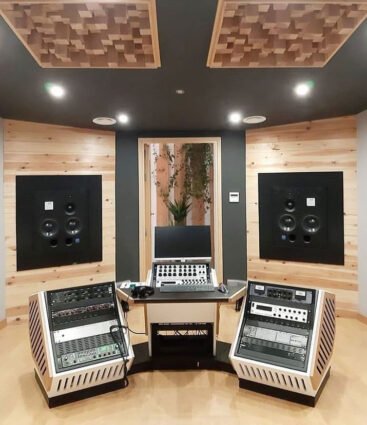I spotted some mastering tips from top multi-platinum producer Warren Huart. I’ll post those below, but before I do, it got me thinking…..what is mastering, what’s the goal, why do we need to do it?
Well, the goal of mastering an audio track is to ensure it sounds polished, balanced, and consistent across all playback systems. It is the final step in the music production process, refining the mix to meet industry standards before distribution. The sprinkling of the fairy dust.

Here’s why it’s done…
- Consistency Across Playback Systems – Mastering ensures the track sounds good on different systems (headphones, car speakers, club PA systems, etc.).
- Loudness Optimization – Brings the track to a competitive volume while maintaining dynamics and avoiding distortion.
- EQ and Tonal Balance – Corrects any frequency imbalances to ensure clarity and cohesion.
- Dynamic Control – Subtle compression and limiting ensure the track has impact without being over-compressed.
- Stereo Enhancement – Adjusts stereo width to create an immersive listening experience.
- Track Sequencing (for albums/EPs) – Ensures smooth transitions between tracks and maintains a cohesive feel.
- Format and Distribution Readiness – Prepares the track for streaming services, vinyl, or CD with appropriate loudness and encoding.
Even with a great mix, mastering is crucial for giving a track its final professional touch and making it competitive in the market.
Here’s Warren’s top ten tips…..
- Start with a Well-Mixed Track. Mastering cannot fix a poor mix. Ensure your mix is balanced, with proper EQ, dynamics, and stereo imaging before mastering.
- Use the Highest Quality Audio File Possible (Please No MP3!). Always master from a 24-bit or 32-bit WAV or AIFF file with at least 44.1 kHz sample rate. Never use MP3s or other lossy formats, these degrade sound quality and reduce mastering effectiveness.
- Set Proper Headroom. Leave -6 dB to -3 dB of headroom in your mix to prevent clipping when mastering.
- Use Subtle EQ Adjustments. Use a linear-phase EQ to correct any minor tonal imbalances. Avoid extreme EQ boosts or cuts—small adjustments (±1-2 dB) go a long way.
- Control Dynamics with Compression
- Use gentle compression (Ratio 1.2:1 to 2:1) to smooth out dynamics. Apply parallel compression if you need more punch without squashing transients.
- Check and Maintain Stereo Balance. Use a stereo imager to ensure width is natural, avoiding excessive widening that may cause phase issues. Keep low frequencies (below 150 Hz) in mono for a solid bass foundation.
- Reference Your Track Against Professional Mixes. Compare your master with similar songs in the same genre to match tonal balance, loudness, and stereo width.
- Check on Multiple Playback Systems. Test your master on studio monitors, headphones, phone speakers, car speakers, and club systems to ensure consistency.
- Take Breaks & Trust Your Ears. Avoid ear fatigue by taking breaks every 30-45 minutes. Mastering should be done at moderate levels (around 75-85 dB SPL) to prevent biased decisions.
All great tips. The stand-out ones for me are…
#8. I think using a reference track is essential. Choosing the right one is another thing in itself.
#9, yep, you gotta check it on everything you can, car, phone, tablet, Hi-Fi, PC the lot.
#10 trust your ears. Yes, but know your ears! I’ve found that as I’ve got older my ears can’t be trusted. I always have to take extra care with the top end because it’s harder for me to hear. I usually get Carla to check it, she has fantastic ears.
